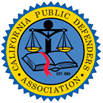Embezzlement is essentially a form of theft. However, while other theft crimes involve taking the property of another person without their permission or against their will, in the case of embezzlement; the offender actually a legal right to possess the property, and then takes or uses it for their own purposes, something they do not have the right to do.
While embezzlement is typically thought of as a white-collar crime, the most common instance of the crime is referred to as employee theft, and occurs across all types of employment; white-collar, blue-collar, retail, etc.
One important distinction is between possession and ownership. In the case of embezzlement, the offender legally possesses the property, but does not have a claim to ownership. Another important distinction for embezzlement cases is that the means by which a person commits the crime is through fraud. This can be a very important distinction since there are a number of different situations where a person can end up taking property that they possessed but did not own, and used if for themselves; but the reason they did that is something other than fraud. In such a case, while they may face other charges, they can avoid the embezzlement charge.
Because it is a theft crime, embezzlement will often be charged in combination with either petty theft or grand theft; depending on the value of the property taken. The threshold between petty and grand theft is currently $950.00. As you can imagine, the penalties for embezzlement, particularly when combined with other charges, can be substantial and will make it very difficult for someone who has been convicted of the crime to obtain employment where they are entrusted with another person's or a company's property. Of course, any type of criminal conviction does tend to make it more difficult for a person to find employment of any kind.
If you find yourself in a situation where you think you might be charged with embezzlement, or already have been; the first and best thing you can do is immediately consult with a criminal defense attorney, explain your situation and see if they can help. You may have a viable defense, or it may be possible to work out a deal to accept a plea bargain for a lesser offense.
Embezzlement As Defined Under the California Penal Code:
There are a number of Penal Code sections that relate to embezzlement. The sections are found in California Penal Code section 503 through 508. The states that if property has been entrusted to one and he appropriates that property by means of fraud; he has committed the crime of embezzlement.
Section 504 of the Penal Code defines embezzlement as it pertains to public servants and officers, directors and other types of agents of corporations, associations and societies. The definition of the crime is much the same as that found in section 503, as it also deals with the fraudulent appropriation of property. To the extent that the definition in section 504 is different, it is somewhat broader in that embezzlement can occur even if the property is not appropriated for personal gain. Under section 504, embezzlement can occur if the property is appropriated for any purpose not pursuant to "the due and lawful execution" of a person's duties as an agent of the governmental department or public or private organization.
Section 505 deals with embezzlement by individuals in the transportation industry (e.g., UPS and FedEx.) Under section 505, a carrier "or other person" who fraudulently appropriates property entrusted to them for purposes of transportation, and uses it for any purpose outside of their duty to safeguard and transport the property is guilty of embezzlement, regardless of whether or not the property remains in its packaging.
Section 506 prohibits embezzlement by trustees, bankers, attorneys, executors, agents, administrators and debt collectors who are in possession of property meant for the use of another person. Similar to section 505, embezzlement is accomplished by using the property for any use other than what is provided for in the "due and lawful execution" of their duties.
Section 507 covers bailees, tenants, lodgers and individuals with a power of attorney for sale or transfer. For these classes of individuals, embezzlement happens when the property is converted for personal use, or actions are taken with the intent to convert the property for personal use.
Section 508 extends the prohibition on embezzlement to clerks, agents and servants "of any person" who intends to fraudulently appropriate property for their personal use so long as that property came into their possession by virtue of their position as an agent, clerk or servant.
Employee theft:
Theft by employees of a business, of money or items, that occurs during the course of the employee performing his duties, is a form of embezzlement. It is prohibited by the general embezzlement code section, California Penal Code section 503.
Employee theft is probably the most common form of embezzlement. The simplest way to understand how this particular crime is committed, is to look at it in the context of a retail store.
Your typical retail store has a number of different types of employees. There are cashiers, shipping and receiving employees, maintenance, people who stock the shelves, management, etc.
In order for an employee to commit "employee theft" (i.e., embezzlement) they must take money or items that are entrusted to them as a part of their job duties. It is important to note that it does not need to be part of their regular job duties, but can also be during the course of a special project or while doing something requested of them by their supervisor that is not a part of their normal duties.
For example, if a cashier takes money out of the register, that would qualify as employee theft embezzlement. If, however, a maintenance employee or a shipping and receiving employee takes money from the register, that is merely petty or grand theft because no money is entrusted to them as a part of their job. Conversely, if a cashier steals products off pallets from the loading dock, that is merely petty or grand theft, while if that theft is perpetrated by a shipping and receiving employee, that constitutes employee theft embezzlement since those products were entrusted to the employee.
There are any number of situations that could possibly constitute employee theft embezzlement. Employee theft can happen in virtually any business that has employees, not just retail sales operations. For some context, here are a few examples:
- A cashier stealing money from the cash register;
- A cashier ringing up one of their friends, but not scanning an expensive item;
- A supervisor giving a customer or another employee a discount they are not entitled to receive;
- Using a company expense account to pay personal expenses; and
- Stealing office supplies;
How Does a Prosecutor Prove Embezzlement:
To prove that the defendant is guilty of embezzlement under Penal Code Sections 503-508, the prosecution must prove the following facts or elements:
(1) The defendant was in a relationship with the victim, where the defendant was entrusted with property belonging to the victim;
(2) The defendant appropriated or converted the property (which of the two depends on the type of relationship and under which Penal Code section(s) the defendant is being prosecuted;) and
(3) The defendant, by converting or appropriating the property, intended to defraud the victim.
There are a couple of important aspects of these requirements. The first is that the property alleged to be embezzled must be placed in the trust of the defendant as a part of them performing their duties arising from their relationship with the victim. If a defendant appropriates property that came into their possession outside of their relationship with the victim, it can still be a theft crime, but not embezzlement.
Perhaps more important, the defendant needs to act with an intent to defraud the victim by taking the property entrusted to them by the defendant. If a defendant can persuasively argue that they never formed that intent, or they acted for some other reason (e.g., negligence, mistake or competing claim of ownership), then they cannot be convicted of embezzlement.
Penalties:
Embezzlement is a type of crime known as a "wobbler" meaning that it can be charged as misdemeanor or it can be charged as a felony. Which of the two a prosecutor will decide to pursue will generally depend on value of the embezzled property. If the total value is less then $950.00, it will generally be treated as a misdemeanor. If the total value exceeds $950.00, it will likely be treated as a felony.
In certain cases where the total value of property embezzled is $50.00 or less, the prosecutor may charge the crime merely as an infraction.
The penalties that will be imposed on the defendant for each version are listed below:
Infraction Embezzlement:
(1) A fine of up to one two hundred-fifty dollars ($250.)
Misdemeanor Embezzlement:
(1) 3 years’ Summary probation;
(2) Up to six months in county jail; and/or
(3) A fine of up to one thousand dollars ($1,000.)
Felony Embezzlement:
(1) 5 years’ Formal probation;
(2) Up to three (3) years in state prison; and/or
(3) A fine of up to ten thousand dollars ($10,000.)
Aggravating Circumstances:
There are a number of potential aggravating circumstances that can be raised in an embezzlement prosecution. The two most important are white-collar embezzlement and public funds embezzlement. If these circumstances are found to be in play, it can significantly affect the sentence imposed.
White-collar embezzlement occurs when a defendant is found guilty of two or more counts of fraud or embezzlement and the total loss caused by those crimes exceeds $100,000.00. If this is found to be the case, the defendant can receive a sentence enhancement of up to 5 additional years in prison.
For public funds embezzlement, if a defendant is found guilty of embezzling public funds, in addition to additional prison time and fines, the defendant will be permanently barred from holding any position in either state or local government.
Defenses:
Good Faith Claim of Ownership:
If a defendant who takes the property of the victim that was placed in their trust has a good faith belief that the property actually belongs to them, then they do not commit embezzlement. However, a defendant may not take property of the victim placed in their trust as compensation for a debt owed them by the victim, or as compensation for other property in the possession of the victim, even if the defendant has a good faith claim of ownership over that separate property.
Lack of Intent to Defraud:
A defendant who converts or appropriates property placed in their trust, but does not do so with an intent to defraud the victim cannot be convicted of embezzlement. For example, a cashier who is ringing up a friend of theirs is socializing rather than focusing on doing their job, and accidentally fails to scan every item; does not commit employee theft embezzlement.
How We Can Help:
If you have been charged with embezzlement, you need an attorney that understands the law, and is aware of the defenses. You need someone that will determine whether the state has sufficient evidence to prove the case against you, and if not how best to proceed. You need someone that can gather all the records, including the necessary ledgers and knows how to analyze and find errors in the records. I, David Foos, have been representing people accused of white-collar crimes for over 40 years. I began as a Deputy Public Defender where I handled many embezzlement cases. From there, I was appointed a Judicial Officer with the Sacramento Superior Court where I served for sixteen years. Now, I have been in private practice for 11 years, representing people accused of crimes. I will bring all my knowledge, experience, and relationships to bear to bring you the best possible results in your case. Call our Sacramento Criminal Attorney for a no-cost consultation at 916-779-3500, or reach me on the internet at Contact@foosgavinlaw.com.















